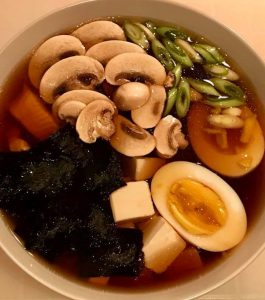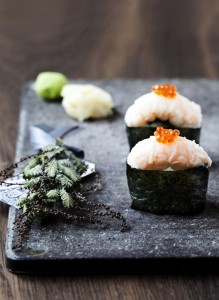Ramen noodles originally come from China noodles that have had a permanent place in Chinese cuisine for thousands of years.
When ramen noodles came to Japan, it was adapted to Japanese cuisine by Japanese chefs using Japanese ingredients to make the noodles.
The ingredients used to make ramen noodles are wheat flour, salt, water and kansui. Kansui is alkaline water from Mongolia. It helps to give the ramen noodles the unique yellow color.
In Japan, there is only one type of ramen noodles that is whether it is dried ramen noodles or homemade noodles.
Ramen noodle soup is the most popular fast food in Japan. It is a dish that does not take many minutes to make once you have the foundation in place. It is a dish that fits into a busy everyday life.
In the Noodle Soup course for beginners, you will learn how to make different kinds of tasty Japanese noodle soups.
_
Zoë has lectured and held sushi courses for A. P. Moller – Maersk, Hugo Boss Nordic, Novo Nordisk, Novartis, Velux, Gorrissen Federspiel, Beierholm revision, Elbek & Vejrup and many more.







